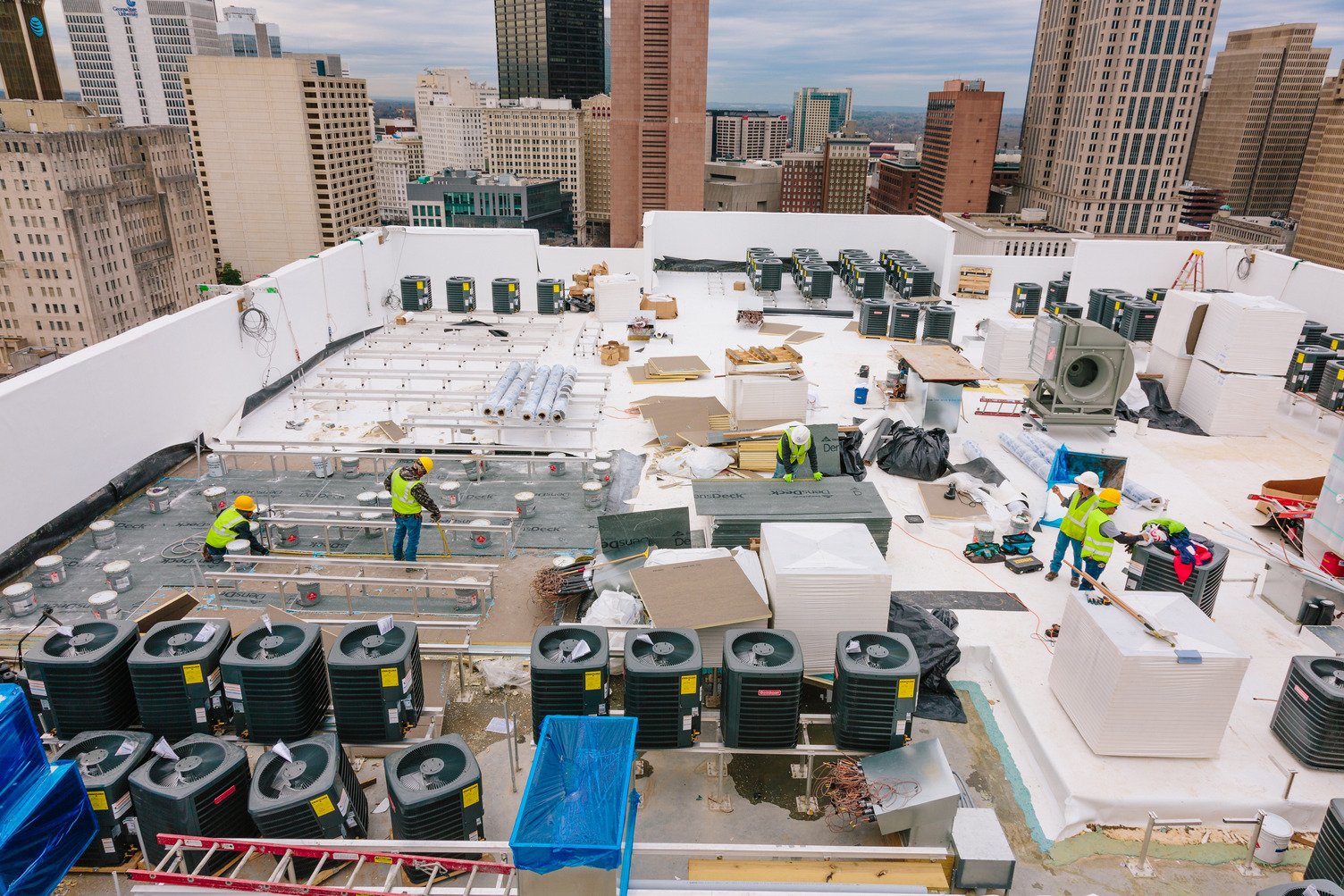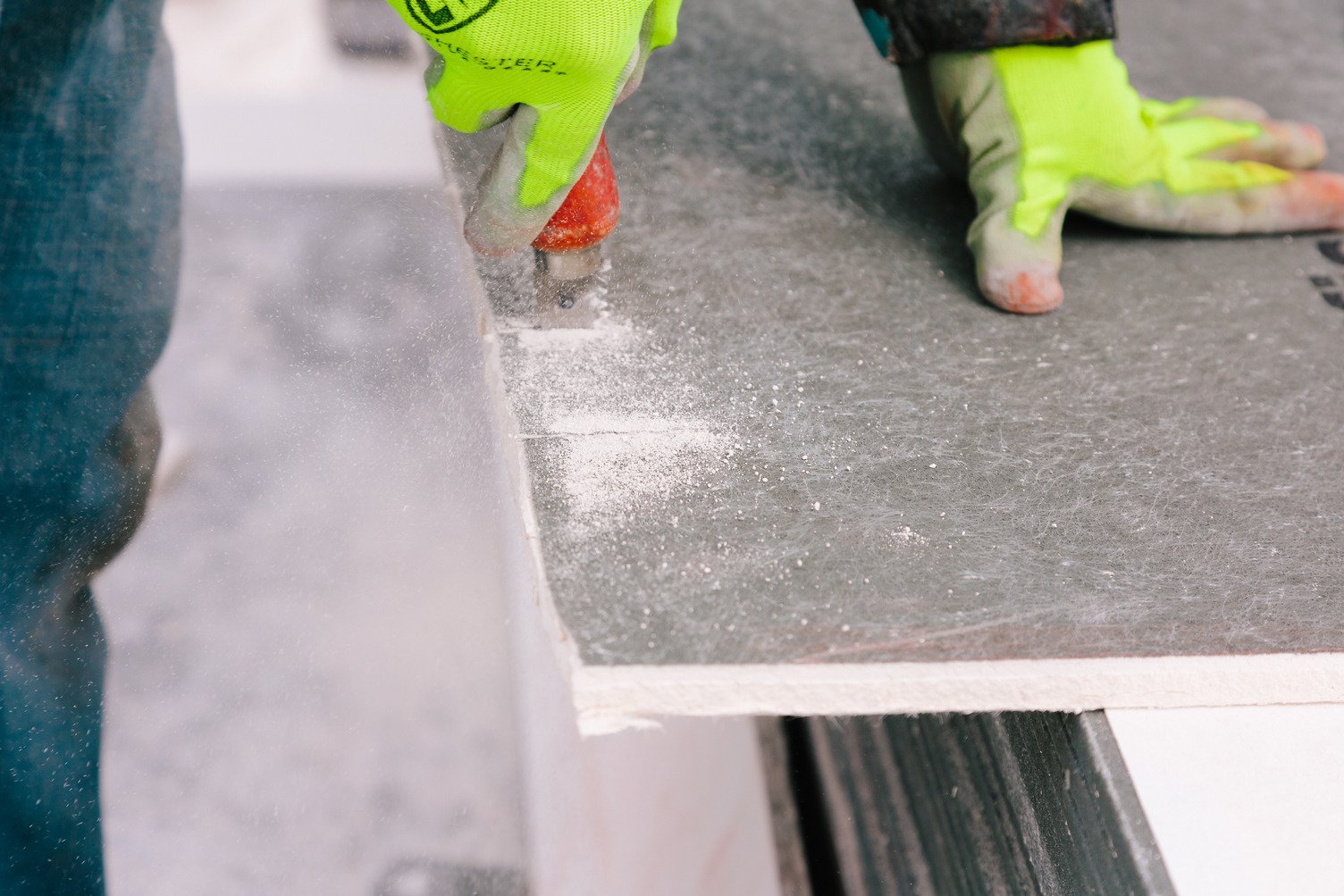3 Insights for Successful Low Slope Re-Roofing

Does your building need a new roof, or will a repair suffice? Consider these professional insights to make the right choice.
A commercial roof isn’t just the top layer of a completed building. It’s also prime real estate for HVAC equipment, solar panels and skylights, communal tenant spaces, and more. Building a roof that accommodates the physical weight of those needs, the foot traffic required to access them, and still seals the building against the elements, is a complicated task. So is maintaining and repairing roofs as the need arises. Here are four considerations to help you determine the best course of action for roof repairs or replacement.
Know the Points of Failure
According to the Certified Commercial Property Inspectors Association (CCPIA), some of the most common reasons for commercial roof failure are thermal cycling, heat, wind, impact, and moisture. Low-quality materials, poor workmanship, or inappropriate design could also be factors.
“Roofing systems are the most expensive components for building owners to replace, so periodic inspections are of the utmost importance,” CCPIA says. “Commercial property inspectors should make sure their clients understand that many roofing problems take time to develop but can be mitigated before costly repairs are required if the system is inspected regularly.”
Repair or Replace?
With this in mind, property managers and their building owners need to know their options for roofing repair or replacement when damage does occur. “Repair or replacement is often a financial question,” says Mikael Kuronen, director of product management, commercial roofing, at GP. “When you have a leak or another issue that tells you something is wrong, can you patch those leaks? Is it an isolated incident/issue or indicative of a bigger problem? Is the roofing system nearing the end of its life cycle?”
Kuronen says some roof damage can be repaired by a qualified roofing contractor or waterproofing specialist. Repairs could involve patches for isolated leaks or applying coatings to extend the life of the membrane, as long as the underlying roof structure is still in good shape.
Consider Code
According to the IBC, roof replacement is required when any of the following conditions exist:
- The existing roof has two or more applications of any type of roof covering
- The existing roof is water-soaked or deteriorated to the point it will not provide an adequate substrate for roof re-covering
- The existing roof covering is slate, clay, cement, or asbestos cement tile.
If a roofing replacement is required for your building, removal of all previous roofing materials down to the supporting deck is mandatory. “In most cases, if you do a full tear-off, the cost is significantly higher since you pay for the demolition of the old roof, plus the cost of building the new roof to the current building code,” he says, whereas repairs usually do not bring code requirements into the mix, not to mention demo costs.
“If you don’t have to do a full tear off, recovering can be a desirable lower cost option since you can often reuse old materials (insulation), and avoid dealing with the labor and cost involved with removing the old roof,” Kuronen says.
Kuronen says commercial low-slope roofs are typically expected to last 15 to 20 years, so most owners will have to go through a repair-or-replace conversation at some point. Keeping these considerations in mind can help ensure informed decisions. If you have questions on whether to repair or replace a roof on one of your projects, connect with one of your local roofing professionals.
